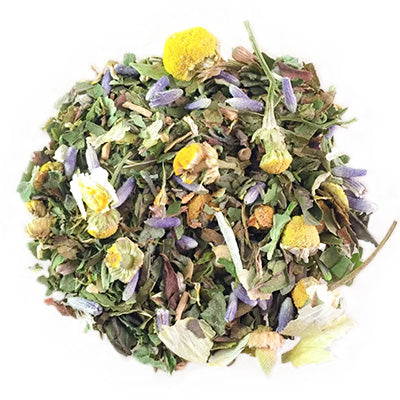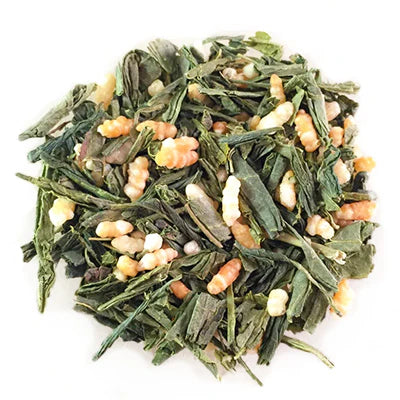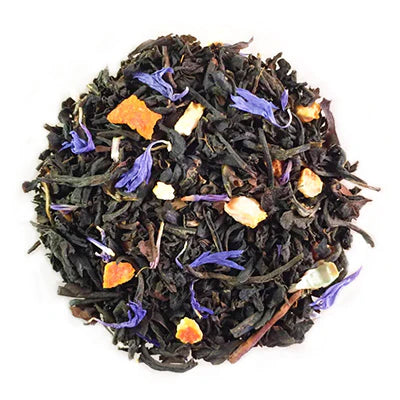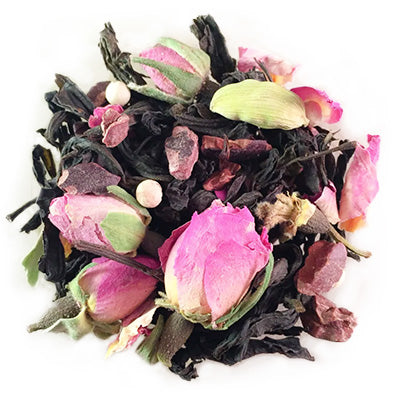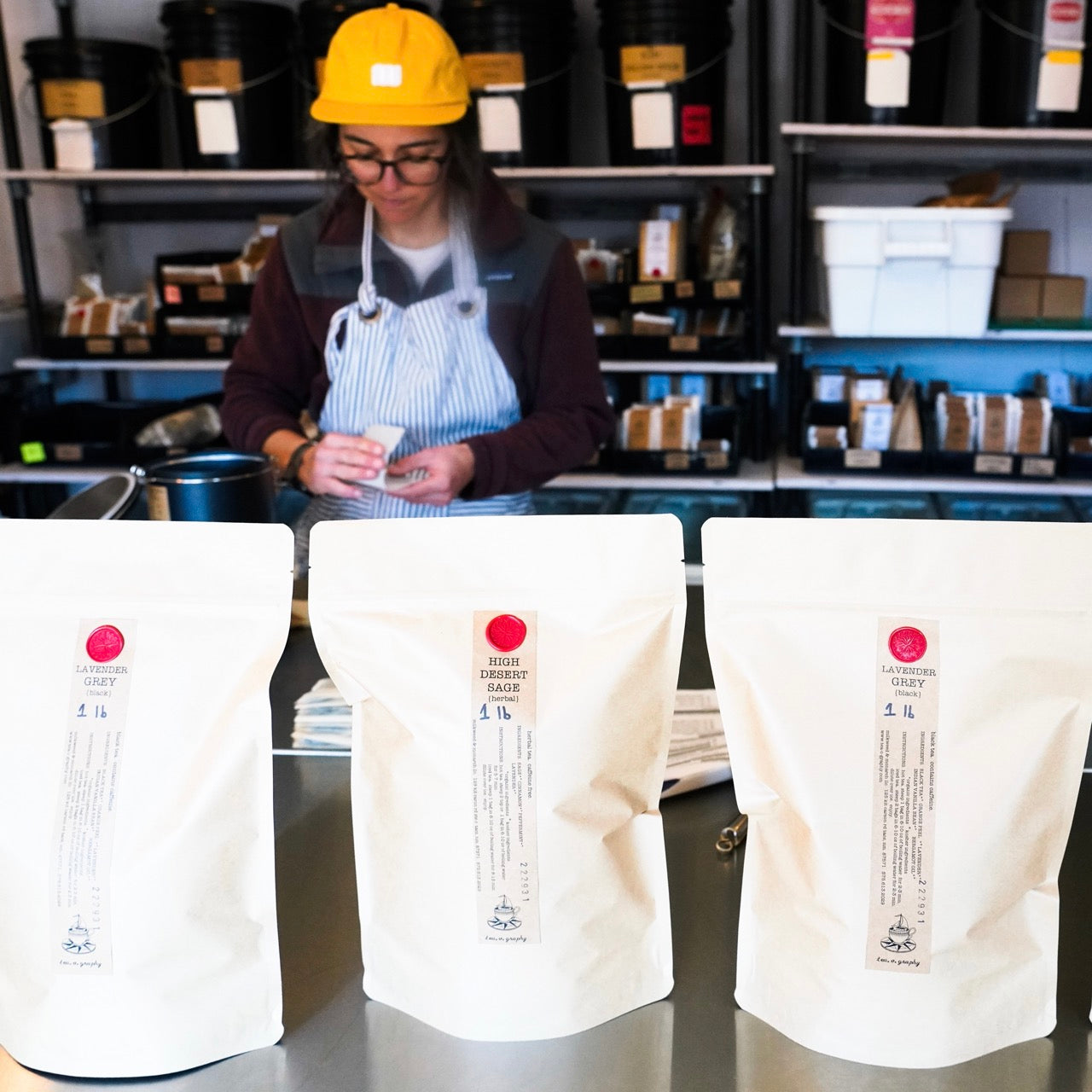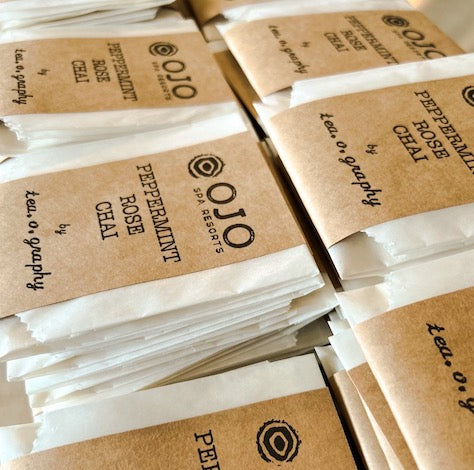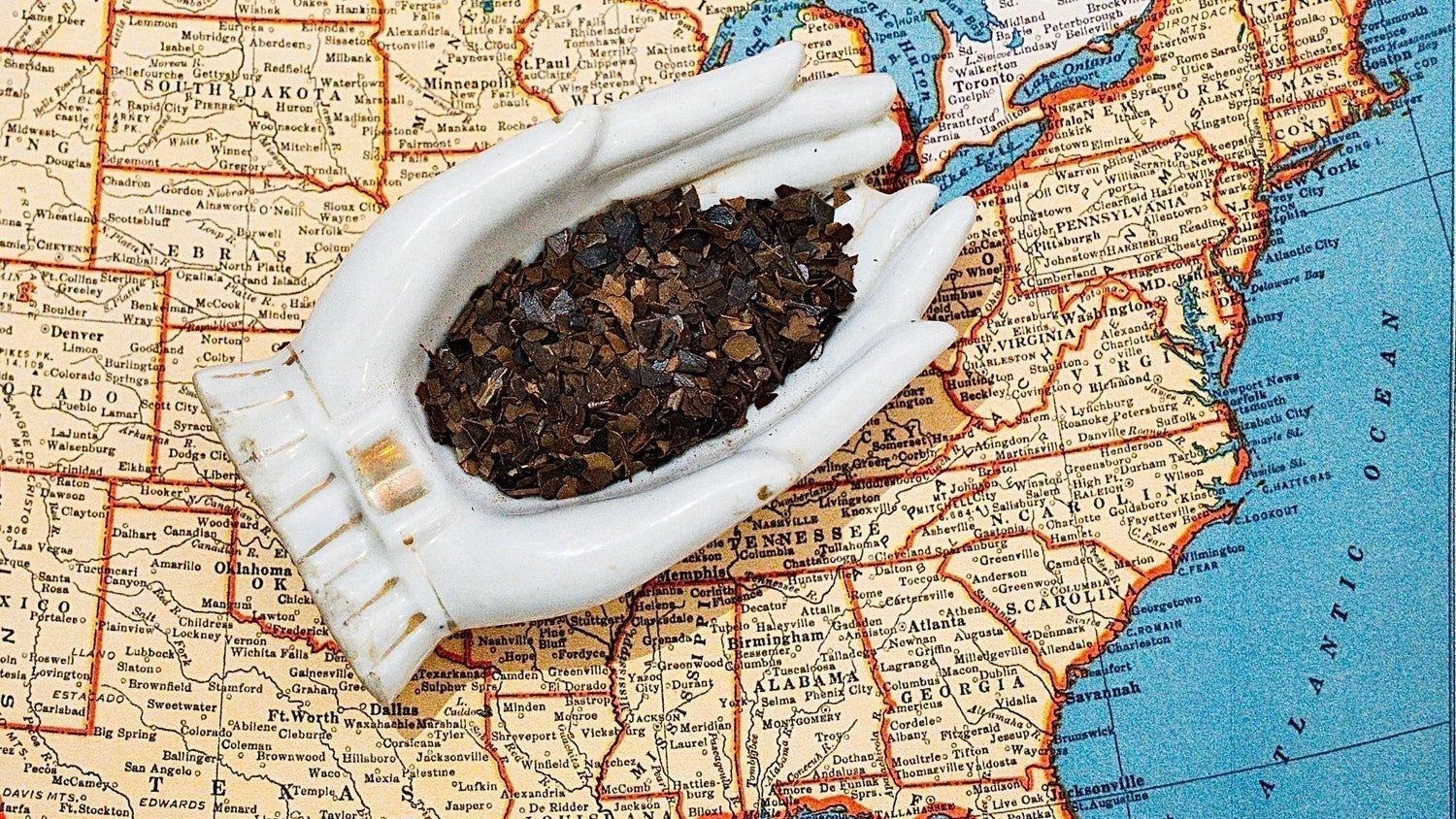While it may not be the first place that comes to mind, The United States has a long and storied history with tea. A rich tapestry of turmoil, protest, innovation, and happy accidents that have truly changed the way we think about and drink tea all over the world today...
WHAT WERE PEOPLE DRINKING IN THE U.S. BEFORE THE 17th CENTURY?

The indigenous people of North America were drinking tisanes (teas not belonging to the C. sinensis tea plant) long before colonization. The most common of these was Yaupon tea, one of the only caffeinated plants native to North America. These regionally derived elixirs were adopted by European colonists before the tea plant made its way to this part of the world, demonstrating an early appreciation for brewed herbs.
TEA IS INTRODUCED TO THE U.S. FOR THE FIRST TIME
 The tea plant, Camelia sinensis, wasn’t introduced to North America until the late 1640s. Dutch traders introduced tea to New Amsterdam (modern day New York) and the drink took off in popularity among the wealthy classes. By the time the Dutch lost the colony to the British in 1664, tea culture was already well established among the elite.
The tea plant, Camelia sinensis, wasn’t introduced to North America until the late 1640s. Dutch traders introduced tea to New Amsterdam (modern day New York) and the drink took off in popularity among the wealthy classes. By the time the Dutch lost the colony to the British in 1664, tea culture was already well established among the elite.
After the British took charge of New York, English tea culture specifically took on a more prominent role in colonial high society. The same elegant tea ware from Europe and China, etiquette rules, and brewing methods practiced in England were adopted in the American colonies. Both English and American teapots were filled with black and green teas imported from China, as the British East India Company maintained a monopoly on this valuable export. Controlling the trade of tea meant they also controlled the flow of product that filled both English and American teapots.
THE BOSTON TEA PARTY
 In the early 18th century, tea drinking became more widespread and popular as a result of being more easily accessible among the classes, spreading beyond New York to the other colonies. Tea parties became common among all classes, and Americans added new rituals and traditions to their tea ceremonies.
In the early 18th century, tea drinking became more widespread and popular as a result of being more easily accessible among the classes, spreading beyond New York to the other colonies. Tea parties became common among all classes, and Americans added new rituals and traditions to their tea ceremonies.
By the late 1700s, Americans had developed a taste for tea. However, when the British enforced the Townshend Act of 1767, this began to change. As a result of these laws, tea was taxed, making it less affordable for all classes. Despite this, a thriving black market trade of cheaper tea continued to be smuggled into the colonies.
When King George III imposed a still heavier tax on the drink with the “Tea Act of 1773” that was the last straw for colonists. On December 16th, 1773 this tension erupted into the Boston Tea Party, where over twenty American colonists tossed crates of tea off merchant ships and into the Boston Harbor.
It is estimated that upwards of 340 crates of tea were dumped into the harbor that day. All of them from China, all of them owned and traded by the British East India Company. This was over 90,000 lbs of tea, worth around $1,000,000 in today's currency. This act of rebellion was an inspiration and soon people were destroying tea throughout the colonies. These acts of rebellion would eventually lead the way for the American War for Independence.
The Boston Tea Party significantly influenced how Americans viewed tea. It became a symbol of the English, and drinking it was considered unpatriotic. As a result, Americans developed a preference for coffee as a form of protest. Despite these historical shifts, early British influence can still be seen in the way Americans consume tea today.
AFTER THE AMERICAN REVOLUTION

After the American War for Independence, American merchants began trading with China directly to get their tea. While Britain waged war on China and began growing their own tea in India in 1839, Americans sailed in and out of Canton port and arrived home on the east coast with ships full of Chinese tea.
This love of Asian teas was further solidified in 1859 when the United States forced Japan to open its ports and trade with the west. Just a few decades later in 1880 it was estimated that almost 50% of all tea imported to America came from Japan. The other 50% was still dominated by Chinese teas. Thus Asia’s tea tastes and habits continued to influence America’s growing tea culture and consumption.
A resurgence in afternoon tea began in the 1800s, and American women also embraced the ritual of entertaining with tea. However, they adapted their events to suit American tastes. The earliest recorded tips and etiquette for hosting tea for an American audience were published in 1847 by Mrs. T.J. Crowden. Her work showed that not only did Americans have different preferences in tea than the English, but American menus also featured more savory dishes compared to the sweet desserts favored by their British counterparts.
Despite American’s newfound preference for coffee after the American Revolution, tea consumption clearly continued to thrive. Some farmers even experimented with growing tea throughout the country in the 19th century, most of which failed. There was however a successful attempt at growing tea commercially in South Carolina. This influenced the tea rituals and culture of that region significantly. Although American tea production was not considered a success as a whole, The United States continued to contribute significant changes to tea culture.
AMERICAN ICED TEA

During WWI and WWII, tea consumption in the US declined significantly due to trade disruptions. Before the wars, Americans enjoyed both green and black teas in equal measure. However, with access to green tea shipments from China and Japan cut off, Americans began purchasing black tea, which was primarily traded by the British Empire and grown in India and Sri Lanka.
After WWII, it's estimated that nearly all tea consumed in America was black tea, marking an end to the long-standing preference for Asian green tea. It wasn't until 1971 that trade with China and Japan resumed to pre-war levels, allowing Americans to rediscover green tea.
The 19th century witnessed the emergence of iced tea, particularly in the Southern United States. One of the earliest American iced tea recipes, documented in the 1879 cookbook Housekeeping in Old Virginia, featured green tea, ice, sugar, and a squeeze of lemon. It's interesting to note that early iced tea often utilized green tea, unlike the more common robust black teas used today. Additionally, various alcoholic punches with a tea base were popular during this period.
By the early 1900s, a love of drinking iced tea grew in popularity and quickly spread across the entire United States.Black tea largely replaced green tea as the primary ingredient due to its increased affordability following a rise in tea imports from India, South America, and Africa. Iced tea from this era also tended to be sweeter, with recipes typically including ice, two spoonfuls of granulated sugar, and a lemon garnish.
One of the common origin stories for the rise in popularity of iced tea in the United States was the Saint Louis World Trade Fair for 1904. A group of tea producers were handing out samples of hot tea, but the summer temperatures were unbearable. Due to the extreme heat, one of the men grabbed a glass of ice and poured his hot tea over it, and the drink quickly became a favorite among the Fair’s large crowd. This was the moment that Americans found their love of iced tea on a large scale! This still proves true today, as most of the tea consumed in the U.S. is iced tea!
Prohibition from 1920-1933 further cemented iced tea into American culture, as many people were seeking non-alcoholic alternatives to replace their favorite drinks when out in public. The introduction of the home refrigerator around that same time also made it possible for iced tea to become a household staple. Iced tea’s popularity also led to the invention of new tea serve ware in the form of the “iced tea spoon”, which has an extra long handle for stirring sugar into the taller glasses.
TEA.O.GRAPHY TEAS FOR A REFRESHING ICED CUP:
- Georgia Peach - a black tea that is quintessentially summer!
- Matcha Mint - matcha mint mojitos anyone? While it can make an amazing cocktail, this green tea is also a refreshing and cooling tea on hot summer days
- Fleurs de Provence - our absolute fave for a delicate, mildly caffeinated, floral refresher
- High Desert Sage - "Taos in a tea cup!" or rather an ICED tea cup...
- Peppermint Rose Chai - an herbal innovative twist on a classic chai
INVENTION OF THE TEA BAG

Did you know that the tea bag was invented quite by accident? In 1908, a New York tea importer by the name of Thomas Sullivan inadvertently invented the tea bag by sending his clients samples of his tea in silk sachets as a cost saving measure. His customers, however, mistakenly steeped the bags whole! They loved the convenience, and soon began requesting these tea bags specifically. Since silk was too expensive for one-time use, Sullivan started using gauze, and eventually, paper fiber tea bags became common.
While the pursuit of efficiency and expediency might sometimes overshadow the nuanced rituals of loose-leaf tea, there's a great deal to appreciate about this invention. It's a testament to ingenuity and has made tea much more accessible to a wider audience.
As plastics have become prevalent in many aspects of our lives, including tea products, there's growing concern about microplastics in tea bags and their impact on our health and the environment.
At tea.o.graphy, we deeply value the simplicity and ritual of loose-leaf tea. We also recognize the undeniable convenience that tea bags offer. Therefore, we are proud to responsibly source and utilize only unbleached hemp and fully compostable tea bags when they are necessary. You can find our recommended tea bags here!
IN CONCLUSION...
The United States tea culture is a rich tapestry reflected in the diverse cultural influences and preferences all across the country. Tea has woven itself into the fabric of our social lives and cultural identity. From its colonial beginnings, where tea was used to incentivize trade, to pivotal moments like the Boston Tea Party protests, this drink has witnessed and shaped significant parts of our history. These cultural traditions reveal tea’s significance as more than just a drink; but as a ritual steeped in shared experiences.
“As we sip from our cups, let us remember that tea tells a deeper story of who we are, how we gather, and how we celebrate our shared humanity.”--Michael Grauslund Andersen

